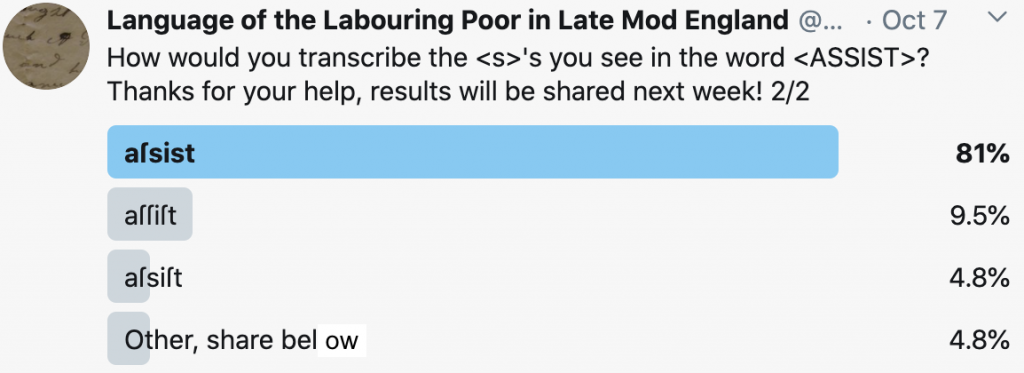Blog post written by Sorcha Walsh (16 October 2020)
So sometimes it seems several scripts show some signs as being similar or seem subtly different. “S” is a sign showing similarities in shape between its possible structures when set by certain scribes.
Alliterative jokes aside, one of the biggest challenges and debates the transcription team has had so far has been determining what kind of “S” we’re looking at. This is partially due to the fact that “S” is one of the graphs that has many variants, as it can be both upper and lower case and, in the period which we’re looking at, was often still formed as a long “S”: a now-archaic form of the lower-case <s>, written as <ſ>. This is one of the instances where what makes this project interesting also makes it challenging. These letters are interesting precisely because they present a non-standard usage of written language, but this also makes it difficult to know what to expect. If these were letters written by educated members of the elite class, we would expect, for example, to have a long <s> as the first <s> in a double-s sequence. The nature of these letters means that we can’t make even that kind of assumption here. What’s more, the handwriting of the petitioners tends to be rather variable, and often no clear distinction is made between upper and lower-case letters in general. “S”, specifically, suffers from this, even without the two different long and short forms!
So we have a situation where it is linguistically interesting for us to work out what version of an “S” was intended: upper, lower, or long… and also where it’s very difficult to tell which is which! This is one of those instances where it is useful to work as a team. Our usual technique to solve this kind of ambiguity is for everyone to decide on what they see after comparing the problematic graph with paleographic guides. The option we go with is the one with which most people agree. Failing that? Twitter polls are also one of the ways in which we try to decide which version of a word or letter to use for the project. Here is such a poll and its results.

Even though, ultimately, we can never truly know what character was “intended” to be written, we do need to make a decision in each case. The systems we’ve put into place help us be as sure as we can reasonably be that the decisions we make are accurate. These systems form a basis for a manual which we continuously update based on our decisions.
Reference: Marshall, H. (2010). Paleography for Family and Local Historians. The History Press.